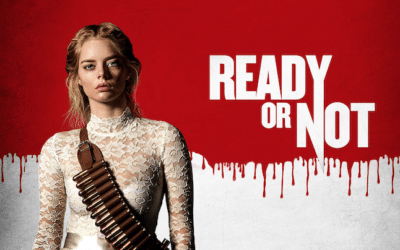
This summer and fall, many have been recognizing the 100th anniversary of the early events of World War I (which lasted 1914-1918), but here’s one we should all note. Do you want a story about two warring armies who – for 24 hours – stopped firing on each other, out of respect for a holiday? It almost reads like a fable about desperate men who just couldn’t bring themselves to obey orders because this one day felt too special, but it happened. Soldiers on both sides of a grisly war honored a completely impromptu cease-fire, even against the wishes of their commanding officers. If you want the whole story, pick up a copy of Silent Night: The Story of The World War I Christmas Truce by Stanley Weintraub (2002). It’s a stunning narrative and it’s all true (unsurprisingly, it’s currently sold out at Amazon and Barnes & Noble, but you can get it instantaneously as an ebook. I found a paperback copy in a used bookstore last September).
Weintraub’s brief (184 pages) history of the days surrounding the truce gives details of miserable war conditions and horrible weather that somehow didn’t cause everyone to hate each other even more. Stress conditions have been proven to increase violence, but incredibly by December 24, 1914 the Germans, Englishmen, Irishmen, Indians, French, Belgians, Scotsmen and North Africans entrenched on the Western Front were ready for a holiday break. Weintraub combed newspapers, letters, personal accounts and military reports for evidence of this truce and he confirms that the Germans initiated it. The English believed the Germans were barbarians and the Germans saw the British and French as soulless, materialists incapable of appreciating Christmas, so everyone’s eyes were opened that year.
On Christmas Eve, German soldiers began setting up Christmas trees on their parapets, causing the Allies to wonder what game or trap they were setting up. Within hours the Germans were waving signs that read “WE NO FIGHT YOU NO FIGHT” and the British could hear them singing. Men’s voices carried “Stille Nacht, heilige Nacht” across the area between the two armies, known as No Man’s Land. It took some doing for the Germans to convince the English, Irish, Scots and Indians that they were sincere, but the most distrustful, according to Weintraub, were the French. When German soldiers began crossing No Man’s Land unarmed, bearing wine, chocolates and cigarettes, the French took the longest to believe them, but eventually they laid down their arms, too. In one area, a trained German dog carried bread, cognac and newspapers back and forth between the German and French lines.
Weintraub speculates that the Christmas tradition might have been stronger in Germany at that time, explaining why the German army equipped themselves with Christmas trees and candles and pushed so hard for everyone to suspend fighting. Many German soldiers risked their lives to walk – completely unprotected – over frozen earth towards the Allies’ line. That the Allies held their fire when the enemy began advancing, even unarmed, shows how different war used to be. One English soldier later reported that with German soldiers walking towards their trenches, the English didn’t feel like they could shoot unarmed men, but they also couldn’t let the enemy behind their lines. What else could the English do but walk out to meet the Germans halfway? So up and down the Western Front soldiers left their trenches to meet, chat, smoke, exchange gifts and even play ball in No Man’s Land. For 24 hours they all acted as if they had never been fighting at all.
Hitler was a regular soldier that Christmas, but Weintraub reports that he refused to have anything to do with the fraternizing. Other soldiers later described him as an odd man who never discussed family or anyone back home, didn’t smoke or drink and often brooded in his dugout. Apparently Hitler wasn’t big on Christmas because not only did he chastize his peers for not fighting on Christmas Eve, he didn’t even participate in the reading of the Christmas gospel.
One of my favorite stories comes from the personal letter of a German soldier who wrote to his beloved about going to cut down a tree outside of an abandoned house. While he was there, he wrote, he noticed inebriated members of the French army coming out with bottles of wine. He ran back to his division and returned with six men so they could get some, too.
They entered the house and were about to go down to the cellar when a French officer saw them, but he was so drunk he didn’t even notice they were German. The officer ordered them to “move out the champagne,” so they willingly headed into the wine cellar where they found many Frenchmen, completely sloshed. At this point, the French soldiers recognized their enemy, but they all agreed to a truce for the rest of Christmas as long as the “Parleyvoozes” (the term this soldier used) helped the Germans carry fifty bottles back to their encampment.
I also like the story of how a German baker dealt with some Algierian soldiers for whom December 24th didn’t mean anything. On Christmas Eve the Muslim Algerians kept firing, enraging the pastry cook, who – incredibly – was working on a batch of marzipan balls. His work interrupted, the baker grabbed a decorated tree and furiously charged the enemy line. The Algerian soldiers didn’t feel like they could shoot this crazy man, so they watched as the baker reached the halfway point between the lines, set down the tree and lit its candles. He reportedly bellowed, “Now you blockheads! Now you know what’s going on! Merry Christmas!” At that point the Algerians received word of the temporary cease-fire and put down their arms.
Silent Night: The Story of the World War I Christmas Truce is full of details about that dream-like time when the entire Western Front of The First World War stopped fighting and started sharing cigarettes, souvenirs and goodies from care packages. They spent Christmas Eve drinking and singing, and on Christmas Day they helped each other bury their dead and then played some ball. You can also find an account of the Christmas Truce on Wikipedia, but be sure to throw Wikipedia five bucks if you use them.
This week, 24-25 December, 2014 is the 100th anniversary of this fable that actually happened. Take a moment to consider what it might be like if warring enemies were still able to see each other as human beings, even some of the time, and not as embodiments of beliefs and ideologies.



0 Comments